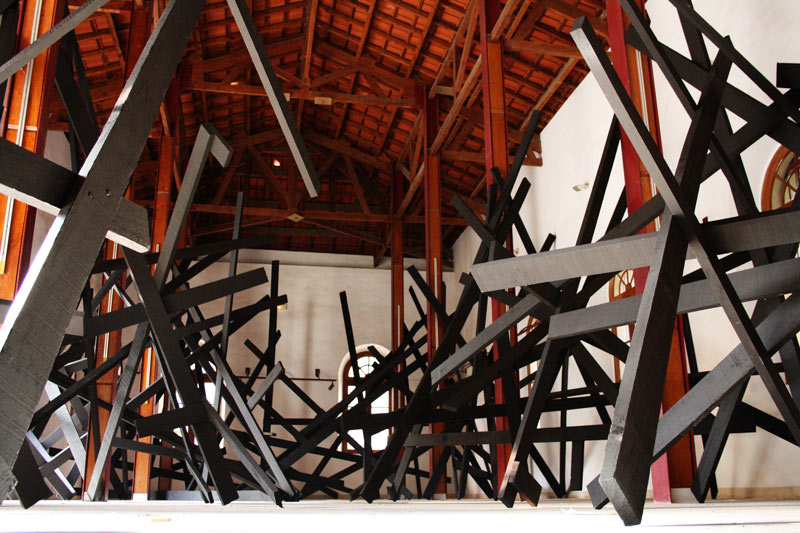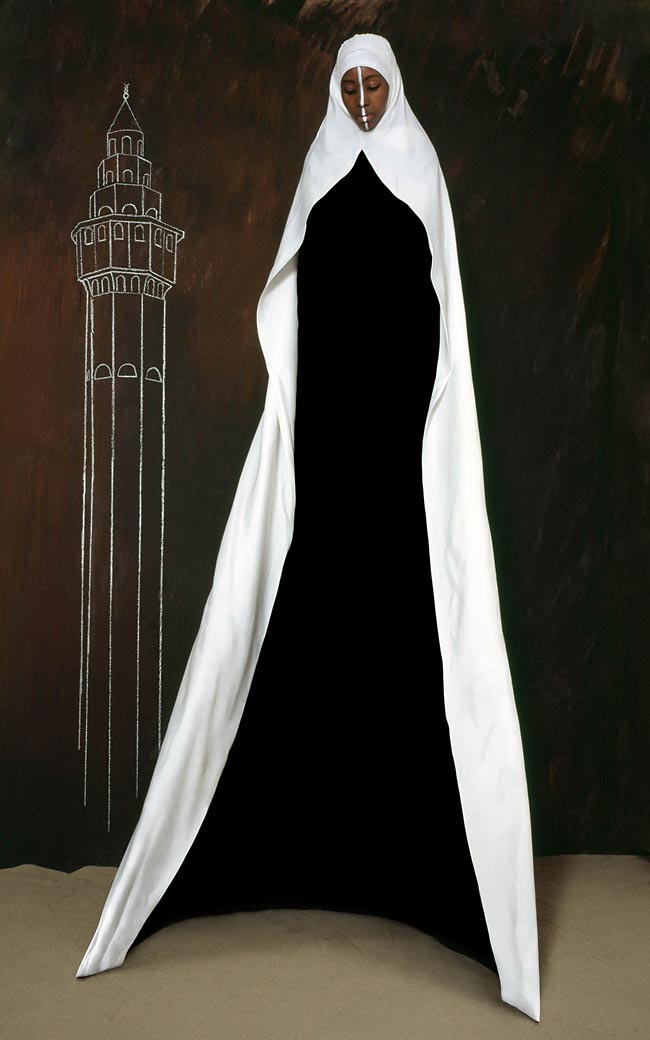
Serge Alain Nitegeka, "Obstacle 1", 2012; © the artist and courtesy Michael Stevenson Gallery, Cape Town/Johannesburg, South Africa and l'Institut Français, Dakar, Senegal
Once again, my friend and colleague Rob Perrée, editor of Kunstbeeld in Amsterdam, has stepped up to the plate. He’s been on the road recently, and he’s sending us Blog Post-cards to report on what he has seen: in this case, Dak’Art 2012: Biennale de l’Art Africain Contemporain in Dakar, Senegal.
SR
« After four days of Dak’Art I can’t deny it any longer: in its present form, the African Bienniale is outdated. It has outlived its usefulness, it lacks urgency, it needs a thorough revision — the sooner the better.
Dak’Art began in 1990 as a literary event. Four years later, it was changed into a meeting place for contemporary African artists and other professionals like critics, curators, theorists etc. The participants – only African artists, living and working on the continent or abroad – were selected out of the hundreds of applications by so-called commissioners. There was no artistic director who was responsible for the quality of the selected works and for the way they were installed and presented to the public. Dak’Art was not independent, it was a state event. Clerks at the Ministry of Culture had more influence than anybody else.
At that time contemporary African art was hardly visible and was just beginning its emergence into the global art scene. There was not much theory about it. African art critics and other art professionals were rare. Therefore it is understandable that this ambivalent and controversial concept was chosen. You have to start somewhere, somehow.
Especially after the year 2000, contemporary African art made its way around the world through biennials and a few big exhibitions (such as Africa Remix at the Centre Pompidou in Paris). Its visibility grew fast. Perhaps there are still people – viewers and professionals – who have trouble accepting the importance of African expression, but not many. By now there is broad recognition of the quality and significance of contemporary art from this continent. Many articles and books are published about it. Several museums have hired African curators, including the Tate Modern in London. Especially through the professionalized infrastructure of South Africa, many artists ‘made it’ internationally: among them William Kentridge, Guy Tillem, Veleko, Malick Sidibé, Samuel Fosso, Tracey Rose, Youssef Nabil and Zwelethu Mthethwa.
Dak’Art seems to be blind to all this. The concept and organization of the Biennale are still the same. The government is using the same script as 20 years ago. The result is a rather small, poor, loveless exhibition installed in a building that has seen far better days. Of course, there were some nice touches: an extra invitational show dedicated to three known artists (Peter Clarke, Goddy Leye and Berni Searle) and an exhibit highlighting the work of female architects (though only in two dimensional, photographic version), a photographer and sculptor added some interest. But these extras hardly changed my opinion about Dak’Art as a whole.
I reserved at least part of every viewing day to the OFF program. At more than a hundred locations, solo shows, group shows, performances and other events were organized. They were both good and bad, predictable and surprising. Sometimes the location was more interesting than the show. Outright amazing was the exhibition curated by the Institut Français. Le Manège was taken over by an installation of Serge Alain Nitegeka entitled Obstacle 1. Black painted planks barricaded the whole space and made it into a kind of claustrophobic prison. On the other hand the structure looked far from solid, it seemed even vulnerable. Escape seemed possible. In the garden, on the walls of an artificial photo studio, hung a selection Antoine Tempé’s portraits of more or less known people from the world of art and culture. Glamorous, decadent and personal, the pictures were sometimes moving.
Africa: See You, See Me: L’Influence Africaine sur la Photographie Contemporaine was to be seen at The Goethe Institute. Although the space was too small, most works survived that problem easily. Absolutely stunning were the portraits of Maïmouna Patrizia Guerresi. Technically perfect, they blended irony with a refined mixture of tradition and modernity.

Maïmouna Patrizia Guerresi, "Untitled", 2008; © the artist and courtesy The Goethe Institute, Dakar, Senegal
The next Dak’Art needs to be accessible to Africans and non-Africans. Confrontation is necessary for a healthy development. There has to be an artistic director who makes aesthetic quality his priority and who fights outdated nationalism and regionalism. And, very important, Dak’Art needs to be independent from the government. The new Minister of Culture, the singer Youssou N’Dour, knows how successful it can be to run your own business independently. »
© Rob Perrée
Dakar, May 2012